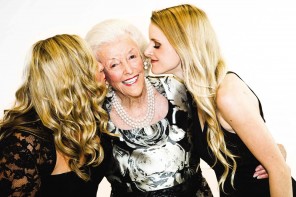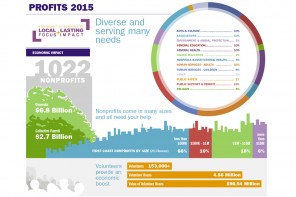Institute the WOW factor
Serious about fundraising, major nonprofit organizations typically employ a professional fundraiser, often a member of staff with the position of development director, to reach out to philanthropists for financial gifts.
But for smaller, limited-budget nonprofits, twisting donors’ arms often falls to the organization’s executive director. Even paying for membership in the Association of Fundraising Professionals may be a stretch for the budget, so looking for creative ways to get needed funds can become a time-consuming exercise.
Jaqueline Cornelius, Principal of Douglas Anderson School for the Arts, has developed a step-by-step how-to, almost a bible, for effective fundraising, based on her successful experiences.
Cornelius is active with the Arts School Network, a nonprofit association founded in 1981, comprised of the leading arts schools and colleges. The Network is dedicated to providing leaders in arts schools with resources, support, and networking opportunities. Learning from her Network peers, Cornelius has turned the practice of fundraising into an art form. Fundraising is simple, she said, it’s about building connections and relationships.
“I’m a facilitator,” Cornelius said. “I try to connect the right people together. That’s where the magic occurs. I build relationships and provide connections between those who have access and can make a difference with those who have needs and are deserving.”
The most critical element in raising money is to have passion for your program and commitment, said Cornelius. Her motivation is the sincere belief arts education is valuable and important for all students.
“It needs to be genuine. If it’s artificial, it’s doomed,” she said. “To create a program and garner support, you need to have WOW in front of you. When you talk with a person about what you believe, you want them to respond with “WOW! Let them see it for what it is.”
Knowing the intricacies of your program is important, Cornelius said. Integral knowledge and data is essential so you can answer any question, she said. Because she defends the value of arts education on many levels, Cornelius formulates quantitative data to support her claims.
Through a study she initiated to uncover indicators of success among Arts School Network institutions, Cornelius discovered art school students score 50-70 percent higher than the mean on SATs; the graduation rate at arts schools is higher (98 percent of the DA senior class graduated last year); and attendance rates are higher on local, state and national levels. “I use this information when I talk with people,” she said.
Cornelius also utilizes other fundraising tools. Start with a vision. Ensure your mission is clear and simple. Know your purpose then define your needs. Develop a solid strategic plan and goals. Establish an advisory board comprised of key community members who will serve as guardians in times of hardship. Join local like-minded organizations such as the city Cultural Council, museum boards, the Rotary or local Chamber of Commerce, she said.
Have staff members join national, state and local boards for their specific area. Host annual events such as galas where city leaders and philanthropists serve as honorary chairs and tie a major giving campaign to the event is also of vital importance.
Establishing an endowed foundation is a good way to cover expenses not in the operating budget, she said. When building a bank of donors, start small by establishing one-on-one relationships with stakeholders and alumni before approaching community leaders and general supporters, she said.
“Find out what they do for a living, what interests them. Perhaps they are costumers, or the executive director of the zoo. See what expertise and experience they have and what their interests are. Know your needs. Plumbers, architects and local businessmen all have connections and can advise you,” she said.
“It’s important to establish a personal relationship with them. People often give because of you, not the institution. You as an individual are an important part in the success of the relationship,” she continued.
Donors want to know their giving makes a difference. The value of handwritten thank-you notes cannot be underestimated and publishing a magazine is another way to thank patrons for their generosity, she said.
“I say to people there are many ways to make a difference and contributing resources to DA is only one of many. You need to match the person with what they are passionately interested in,” Cornelius said. “It might not be art or education but hospice or the river or nature. I might connect them with Mayo, or the St. Johns RIVERKEEPER. The bottom line is to be genuine. This way, I’m still working to make a difference, even if it is not here, and that’s part of the magic. I’m a part of facilitating them with what they want to do.”



